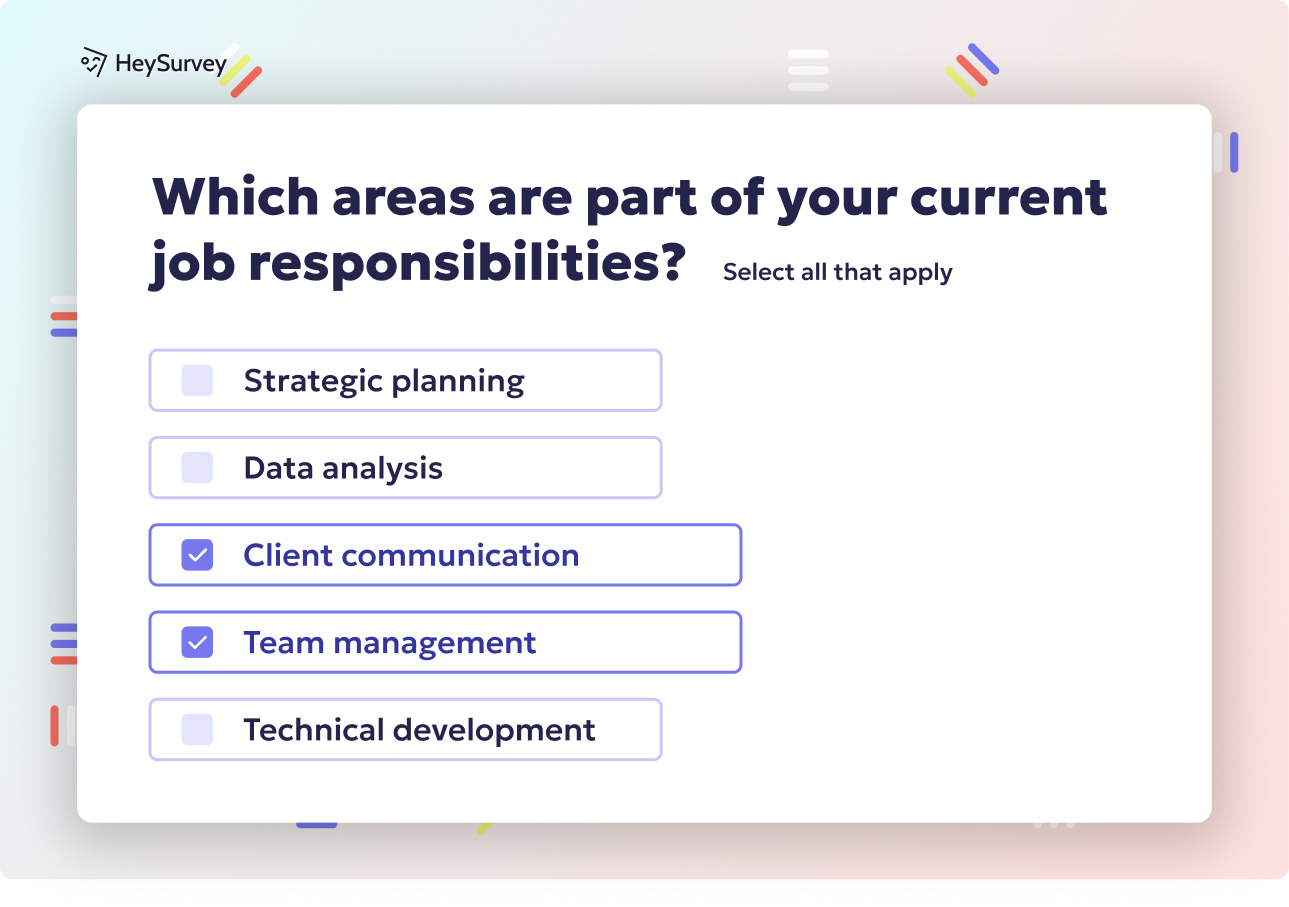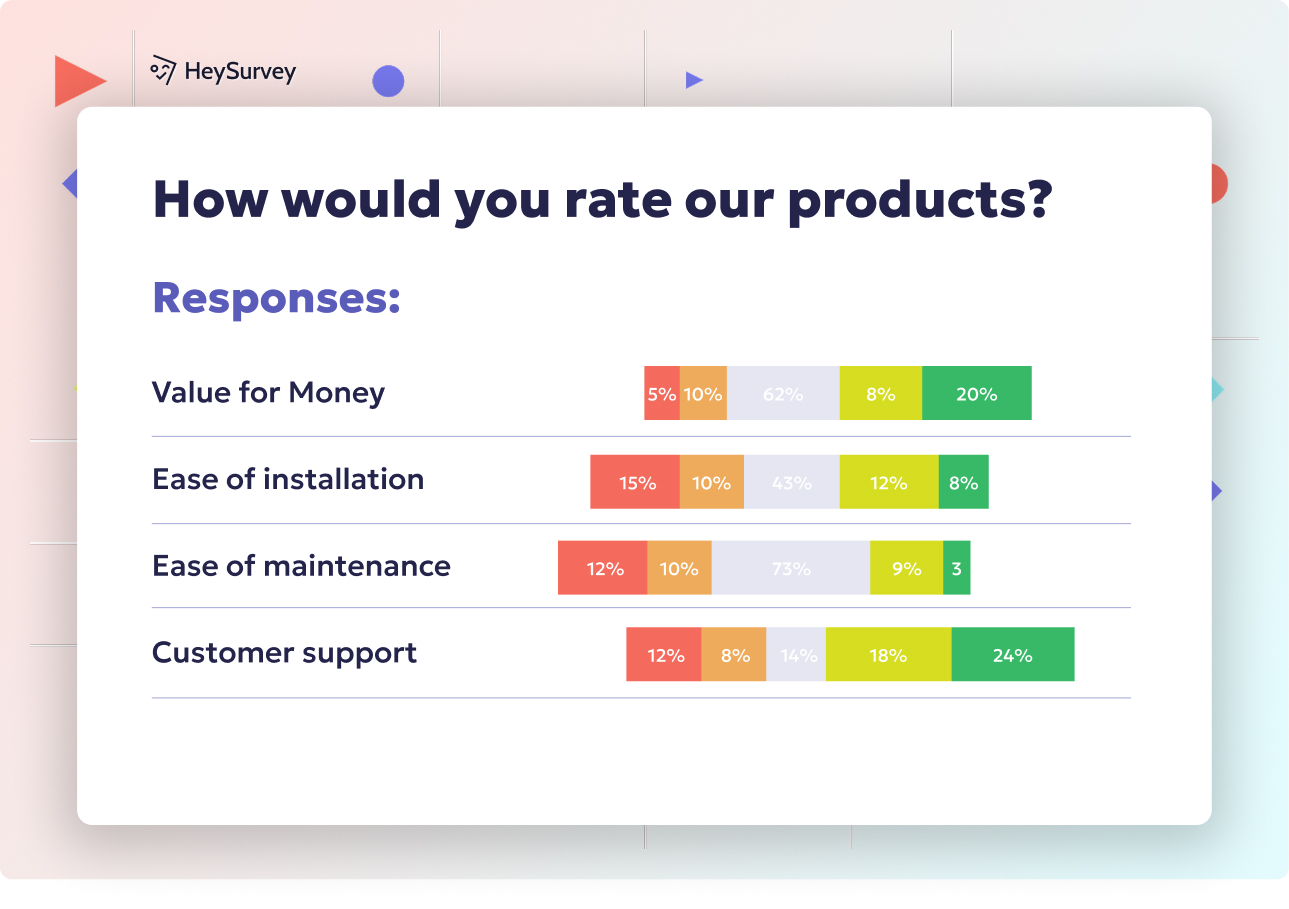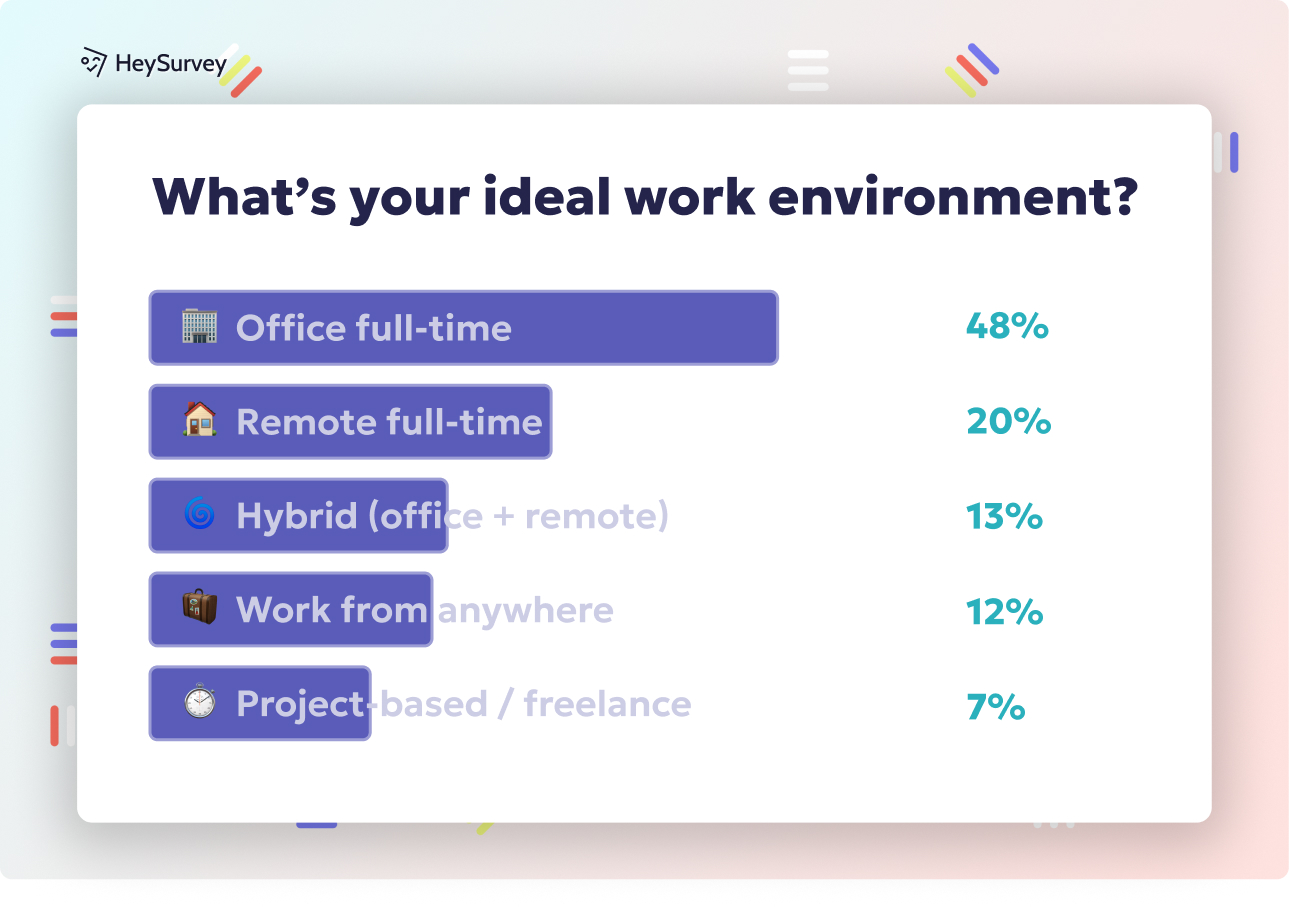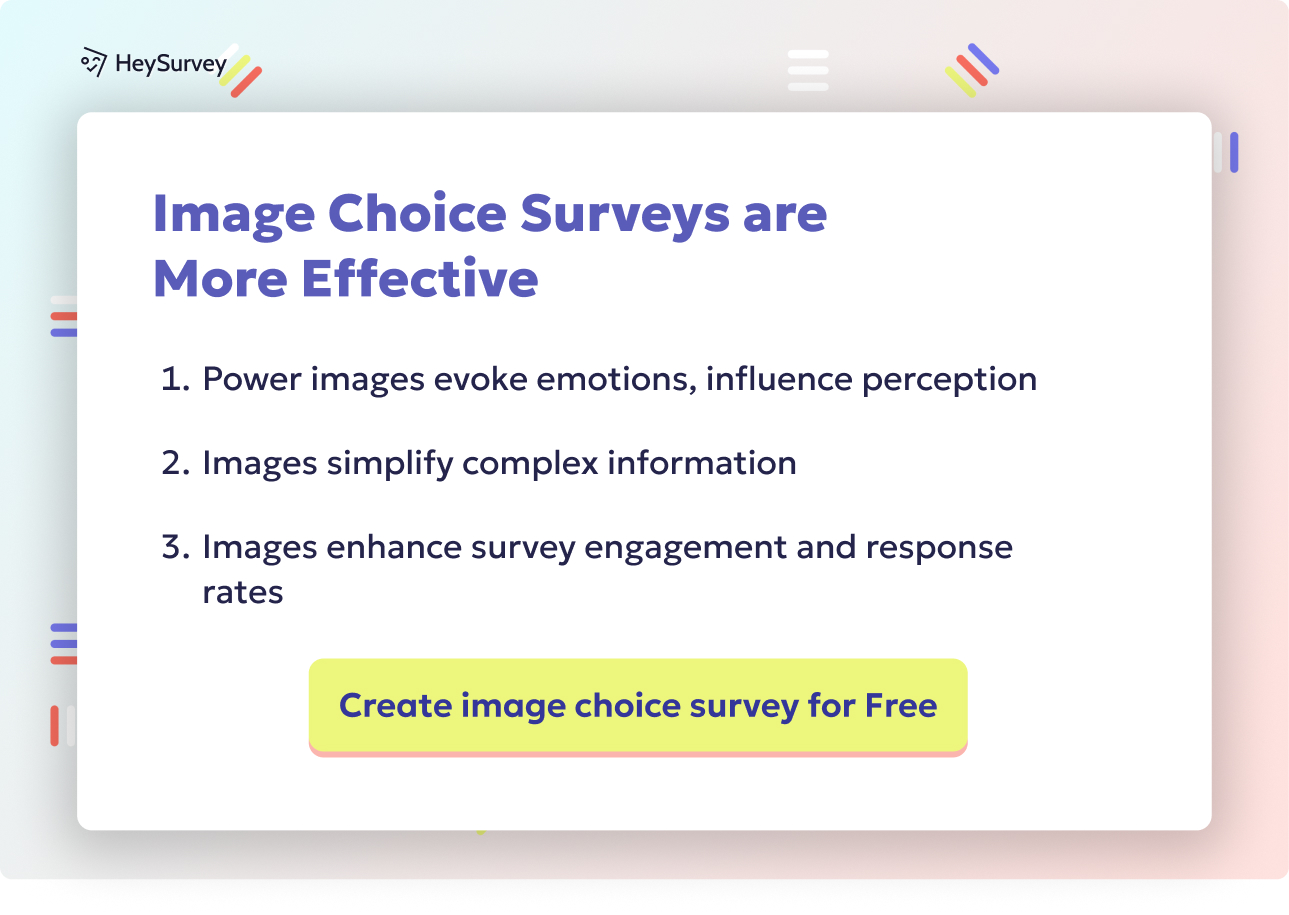31 American Community Survey Questions: Types & Expert Tips
Explore 35 American Community Survey questions with types, sample items, and expert tips to master community data collection and analysis.
The American Community Survey (ACS) is not your everyday questionnaire—it’s the pulse check for the nation, guiding everything from federal funding to local business investments. Knowing the ins and outs of the ACS questionnaire—especially what types of ACS questions exist—can give you superpowers in designing community data collection or your own U.S. Census survey examples. Whether you’re a policy wonk, a nonprofit hero, or a spreadsheet enthusiast, understanding community survey design helps you gather the right data at the right time. Let’s dig in and see what makes ACS questions tick.
Demographic Question Set
Why & When to Use
Population characteristics questions are the backbone of any meaningful survey. They unlock a treasure trove of insights by revealing who makes up your community. Demographic questions help researchers understand age-sex breakdowns, household compositions, and the scope of racial and ethnic diversity.
These items are perfect for baseline data collection before launching new programs or services. If you're tracking trends over time—say, monitoring community changes for a yearly report—demographic questions provide the foundation for longitudinal analysis. Use them whenever you need to compare group outcomes or examine cross-tabulations with other indicators, like health or employment.
Deploy these questions at the start of any survey where racial composition or basic characteristics are key to context. You’ll want demographic details to:
- Set a survey’s baseline.
- Evaluate outreach to different subgroups.
- Cross-reference with other ACS questionnaire sections.
- Tailor follow-up surveys for special programs.
Understanding who is in your sample also ensures your analysis isn’t a shot in the dark. It’s essential when new programs launch, as you need to know if you’re reaching the right people. In short, demographic questions are your survey’s passport to meaningful insights.
5 Sample Demographic Questions
- What is your age?
- What is your sex? (Male / Female)
- What is your race? (Select all that apply: White, Black or African American, Asian, American Indian or Alaska Native, Native Hawaiian or Other Pacific Islander)
- Are you of Hispanic, Latino, or Spanish origin?
- What is your relationship to the person listed as Person 1 on this questionnaire? (Spouse, Child, Other relative, Non-relative)
The U.S. Census Bureau plans to include questions on sexual orientation and gender identity in the American Community Survey by 2027 to better represent LGBTQ+ populations. (apnews.com)

Creating an American Community Survey–style survey with HeySurvey is a breeze—even if you’re new to the platform. Here’s how to get started in just three easy steps, plus a couple of bonus tips to take your survey from good to great!
Step 1: Create a New Survey
- Head over to HeySurvey and either sign in or start creating without an account. You can always register later to publish your survey and collect responses.
- Click on Create New Survey and choose from:
- An Empty Sheet for full customization,
- A Pre-built Template if you want a head start, or
- The Text Input Creation method if you prefer typing your questions directly.
- An Empty Sheet for full customization,
- Give your survey a name that reflects your data collection purpose; this helps keep things organized when you manage multiple projects.
Step 2: Add Questions
- Click the Add Question button to start building your question list.
- Choose the appropriate question type—Choice, Text, Scale, Number, Date, etc.—to match your vision.
- For ACS-inspired questions, try to keep the wording close to original ACS phrasing for consistency and comparability.
- Add descriptions or images if you want to guide or engage respondents further.
- Mark important questions as required to ensure you don’t miss critical data.
- Keep adding questions until your survey covers all desired demographics, housing, economic, education, migration, health, and technology insights.
Step 3: Publish Your Survey
- When your survey is ready, click Preview to see it through your respondents’ eyes. Make any last-minute tweaks.
- Hit Publish to generate a shareable link or embed code you can send out or post online.
- Note: Publishing requires an account, so if you began without one, sign up now to activate your survey.
- Once published, start collecting responses and track results through HeySurvey’s reporting dashboard.
Bonus Step 1: Apply Branding for a Professional Look
- Open the Designer Sidebar to customize colors, fonts, backgrounds, and question card styles.
- Upload your logo at the top left to make your survey instantly recognizable.
- You can also add background images or animations to jazz up the experience.
Bonus Step 2: Define Settings and Branching Logic
- Use the Settings Panel to:
- Set start and end dates for your survey availability,
- Limit the number of responses if needed,
- Add a redirect URL after completion, and
- Enable respondent viewing of results for certain question types.
- Set start and end dates for your survey availability,
- For tailored respondent experiences, apply branching to jump to different questions based on previous answers. This keeps surveys relevant and digestible.
With these simple steps and neat extras, you’re all set to craft a comprehensive, user-friendly survey inspired by the American Community Survey—all on HeySurvey, hassle-free! Give it a try by opening the template below and get ready to collect your community’s story.
Housing Characteristics Question Set
Why & When to Use
Ever wonder why city planners, developers, or grant writers spend hours poring over housing data? It’s because housing tenure surveys and housing quality questions reveal everything from overcrowding to affordability. The American Community Survey housing section provides a blueprint for understanding neighborhood needs, zoning decisions, and housing market dynamics.
These questions are especially potent for:
- Neighborhood revitalization assessments.
- Planning applications for HUD and other housing grants.
- Disaster recovery planning and post-catastrophe rebuilding.
- Long-term real estate studies and affordable housing proposals.
Housing data answers key questions for local governments—not just “who lives here,” but “how do they live?” Identifying gaps in quality, number of rooms, or facilities available helps you advocate for new developments or repairs. It also signals where public policy can make a real difference.
Utilize this section when you need to:
- Describe the state of homes in a particular place.
- Apply for housing-specific funding.
- Spot trends in property tenure or structural age.
- Identify housing gaps that impact vulnerable populations.
Housing questions are vital for anyone interested in place-making or improving communities block by block!
5 Sample Housing Questions
- Do you own or rent this house, apartment, or mobile home?
- How many separate housing units are in this building?
- What year was this house or apartment built?
- How many rooms are in this house or apartment, not counting bathrooms?
- Does your household have complete plumbing and kitchen facilities? (Yes/No)
The American Community Survey's housing questions are essential for understanding housing affordability, planning community development, and ensuring equal opportunity. (census.gov)
Economic & Income Question Set
Why & When to Use
Income survey items and employment status questions aren’t just about dollars and cents—they tell the story of a community’s well-being. The ACS economic data drives decision-making for economic development, poverty alleviation, and workforce initiatives.
Use these questions when:
- Planning or applying for economic development incentives.
- Calculating community poverty rates.
- Designing new workforce training programs or job fairs.
- Performing pre-grant baseline studies or yearly community needs assessments.
This section is essential for digging into how economic variables impact daily life. Are residents employed or struggling to find work? What industries keep the local economy humming? Understanding class of worker and total household income lets you target interventions where they matter most.
Include these questions in:
- Annual public benefits reviews.
- Career pathway or adult education assessments.
- Economic resilience planning, such as in times of recession or after major economic shocks.
If you need community-level economic intelligence, these items deliver the goods. Don’t overlook their power—they shape everything from tax base projections to business attraction strategies.
5 Sample Economic Questions
- What is your current employment status? (Employed, Unemployed, Not in labor force)
- What is your principal occupation?
- In what industry do you currently work?
- Are you a private wage and salary worker, government employee, self-employed, or unpaid family worker?
- What was the total income of all persons in this household in the past 12 months?
Educational Attainment & School Enrollment Question Set
Why & When to Use
Questions about education level survey and school enrollment questionnaire items unlock key insights for school district planning, adult education, and workforce strategy. The ACS education tables are like a roadmap for talent pipelines and community learning needs.
Deploy these whenever:
- Planning for future school capacity or redistricting.
- Designing adult education or high school equivalency programs.
- Conducting workforce readiness assessments for regional employers.
- Surveying parents and students during back-to-school seasons.
This data illuminates where student populations are rising, where adults might need retraining, and how educational background influences job prospects. Granular info on highest grade completed or current enrollment shapes funding priorities for school boards and community colleges.
Perfect for:
- Community college outreach and regional economic planning.
- Identifying gaps in degree fields or skill areas.
- Supporting grant applications and educational improvement plans.
With educational attainment data, you can champion access to learning, drive investment in training, and better meet your community’s needs.
5 Sample Education Questions
- What is the highest grade or level of school you have completed?
- What was your field of degree?
- Are you currently enrolled in school or college?
- Is the school you attend public or private?
- What is your current grade level or year of attendance?
In 2022, 37.7% of U.S. adults aged 25 and older held at least a bachelor's degree, a figure statistically unchanged from 2020. (test.census.gov)
Migration & Journey-to-Work Question Set
Why & When to Use
Commuting survey questions and migration patterns survey items reveal how people move—across states, between neighborhoods, and even across town for work. The ACS journey-to-work section is gold for anyone in transportation, urban planning, or real estate.
Turn to these questions for:
- Regional transportation planning and carpool program design.
- Applying for transit funding or conducting route studies.
- Analyzing relocation trends for housing or real estate forecasting.
- Assessments of traffic congestion, rush hour planning, and commutes that make or break daily routines.
Understanding commute mode and travel time can help shape smarter transit investments or identify needs for new bike lanes, bus stops, or park-and-ride facilities. Want to know how work-from-home trends have changed traffic? These are your go-to questions.
Use migration data to:
- Track who is moving into or out of your region.
- Analyze the impact of new job centers or housing developments.
- Support grant applications for public transportation upgrades.
You’ll get a window into how mobility shapes local economies, educational opportunities, and work-life balance.
5 Sample Migration/Commuting Questions
- Where did you live one year ago? (Specify city, county, and state)
- What was your main means of transportation to work last week? (Car, bus, train, walk, bicycle, worked from home)
- How long did it usually take you to get from home to work last week?
- At what time did you usually leave home to go to work last week?
- How many people, including yourself, usually rode to work in the vehicle last week?
Health Insurance & Disability Question Set
Why & When to Use
Disability prevalence survey and health coverage questionnaire items are essential for public health, hospital planning, and accessibility initiatives. The ACS disability questions serve as the foundation for everything from Medicaid outreach to ADA compliance mapping.
Best used when:
- Conducting public health needs assessments or planning new clinics.
- Writing hospital community-benefit reports.
- Identifying accessibility shortcomings for ADA upgrades.
- Preparing for health grant applications or annual insurance reviews.
These questions help highlight where health system investments are necessary. Are there clusters of uninsured residents? Where are hearing, cognitive, or ambulatory difficulties most common? Knowledge like this drives funding, outreach, and program design.
Include in:
- Hospital service planning or nonprofit health initiatives.
- Accessibility audits for public spaces, transit, or buildings.
- Monitoring the effectiveness of health insurance expansion efforts.
With accurate data on insurance type or disability, you empower policymakers and advocates alike to remove barriers and bolster safety nets.
5 Sample Health/Disability Questions
- What type of health insurance coverage do you currently have? (Employer, Medicaid, Medicare, Private, None)
- Were you uninsured at any time in the last 12 months?
- Do you have serious difficulty hearing, even when using a hearing aid? (Yes/No)
- Because of a physical, mental, or emotional condition, do you have serious difficulty concentrating, remembering, or making decisions? (Yes/No)
- Do you have serious difficulty walking or climbing stairs? (Yes/No)
Technology & Internet Access Question Set
Why & When to Use
Internet access survey and digital equity questions have become pivotal as connectivity shapes everything from school to shopping. The ACS broadband data offers a digital cross-section of households, spotlighting barriers and powering innovation.
Use these questions for:
- Digital divide studies in urban and rural settings.
- Broadband grant applications to expand internet infrastructure.
- Gauging remote learning or work-from-home readiness for school districts and employers.
- Informing smart-city initiatives, rural connectivity campaigns, or telemedicine investments.
These items make it clear who can access digital opportunities and who is left buffering. Details on smartphone or computer availability spotlight gaps and help planners prioritize infrastructure upgrades.
Ideal during:
- Community technology assessments.
- Rural broadband planning and advocacy.
- Measuring impacts of new digital inclusion policies.
With a little broadband know-how, you’ll bridge gaps for students, businesses, and entire communities.
5 Sample Technology Questions
- Does anyone in this household own or use a desktop or laptop computer? (Yes/No)
- Does anyone in this household have a smartphone? (Yes/No)
- Is there a broadband internet subscription in this household? (Yes/No)
- Does your household have a data-only cellular plan? (Yes/No)
- Are there any limits on the amount of internet usage in your household? (Yes/No)
Best Practices: Dos and Don’ts for Using ACS-Inspired Questions
Dos
Survey design isn’t just about asking questions—it’s about asking the right ones, the right way. To honor the spirit of the ACS questionnaire tips, stick to a few golden rules:
- Keep ACS wording whenever possible to ensure results are comparable to national data.
- Pre-test your survey locally to troubleshoot misunderstanding or skip patterns before launch.
- Respect skip logic, so respondents only answer relevant items and avoid confusion or fatigue.
- Update with the latest Census revisions each year to maintain the gold standard of accuracy.
- Ensure respondent confidentiality and data security, especially with sensitive topics.
Don’ts
Even seasoned researchers can make classic errors. Dodge these common survey mistakes if you want meaningful, credible outcomes:
- Don’t overload respondents—fewer, higher-quality questions are better than pages of fluff.
- Never alter ACS definitions, like changing the income time-frame, or you’ll muddy your data pool.
- Don’t ignore weighting schemes needed for accurate population estimates.
- Avoid combining disparate time periods (e.g., last year’s vs. last month’s data) in a single analysis.
- Don’t omit necessary explanatory notes—unclear items confuse participants and can tank response rates.
Following these survey design best practices means your work will stand up to scrutiny, support actionable insights, and (maybe most importantly) make survey-takers smile.
In summary, like a Swiss Army knife, the American Community Survey offers well-honed tools for every data need—from demographics to the digital divide. Use ACS-inspired questions for policymaking, grant-writing, or any project needing community-level insights. Pair consistent wording with local know-how for survey results that shine. With thoughtful question design, your next survey could be the spark for serious community change. Happy surveying!
Related Demographic Survey Surveys

25 Poverty Survey Questions for Measuring Household Poverty Effectively
Explore a comprehensive guide with over 35 poverty survey questions covering demographics, income...

32 Questions About Homelessness: Essential Surveys to Understand Housing Insecurity
Explore 27 essential questions about homelessness across demographics, attitudes, needs, services...

30 Demographic Survey Questions for College Students Guide
Explore 35 essential demographic survey questions for college students covering identity, academi...

